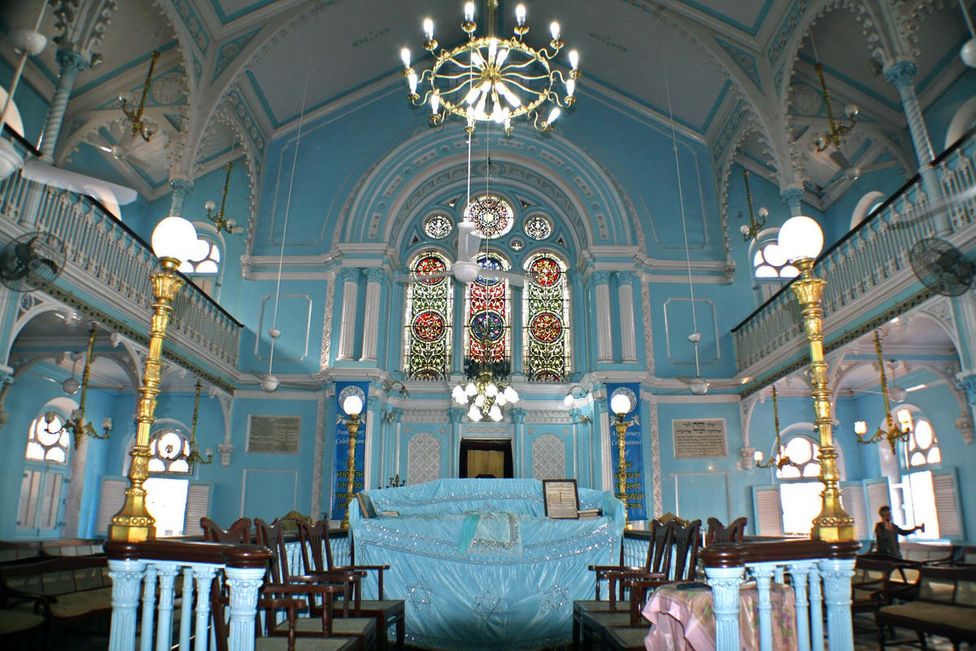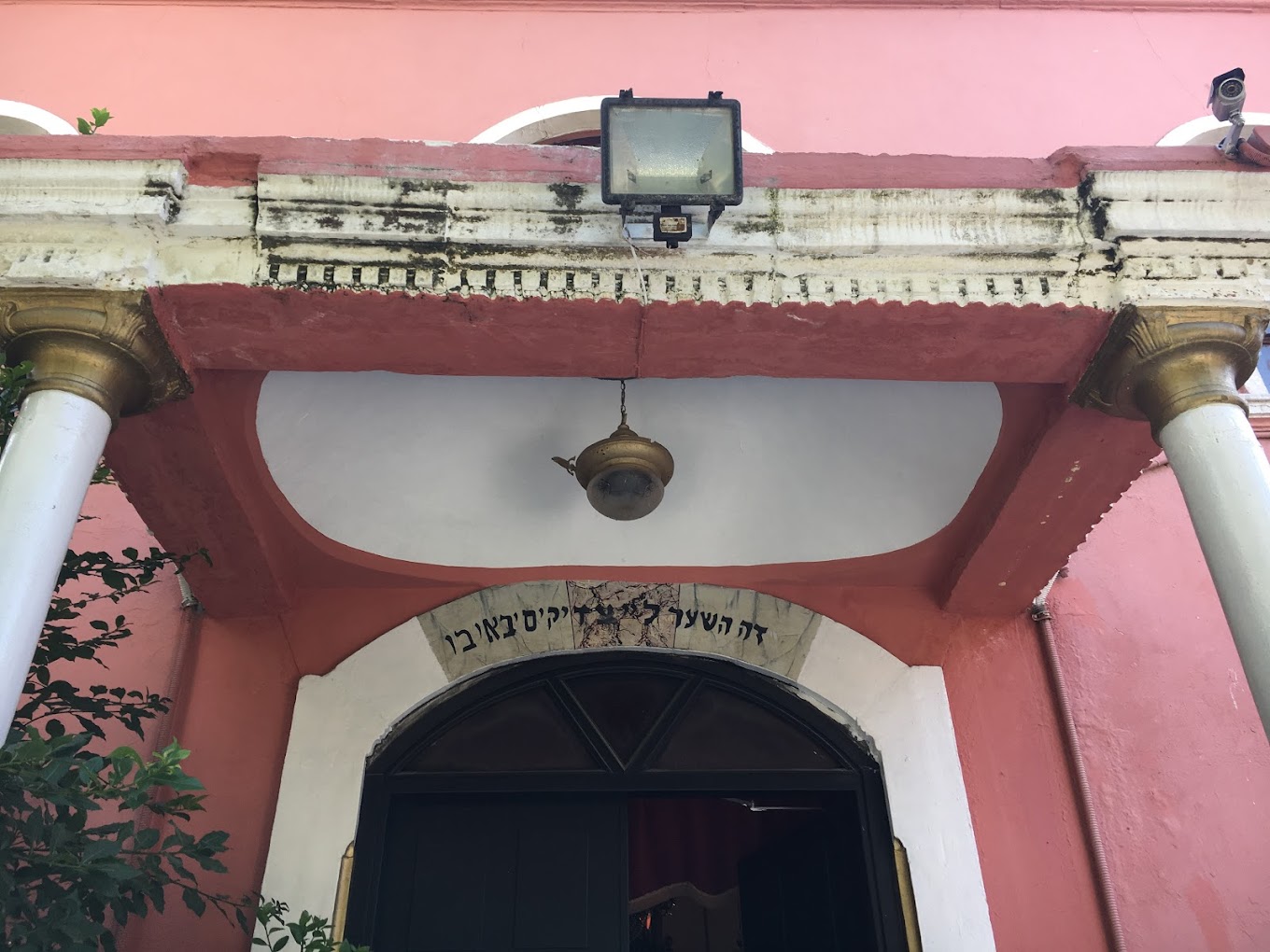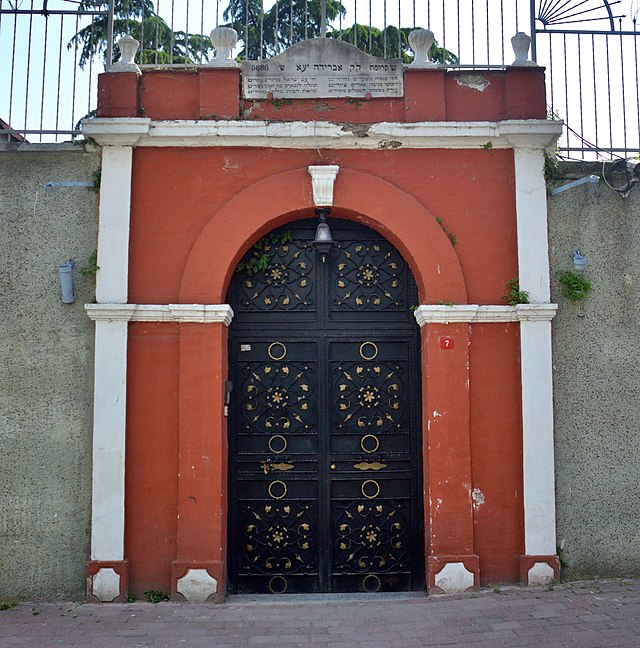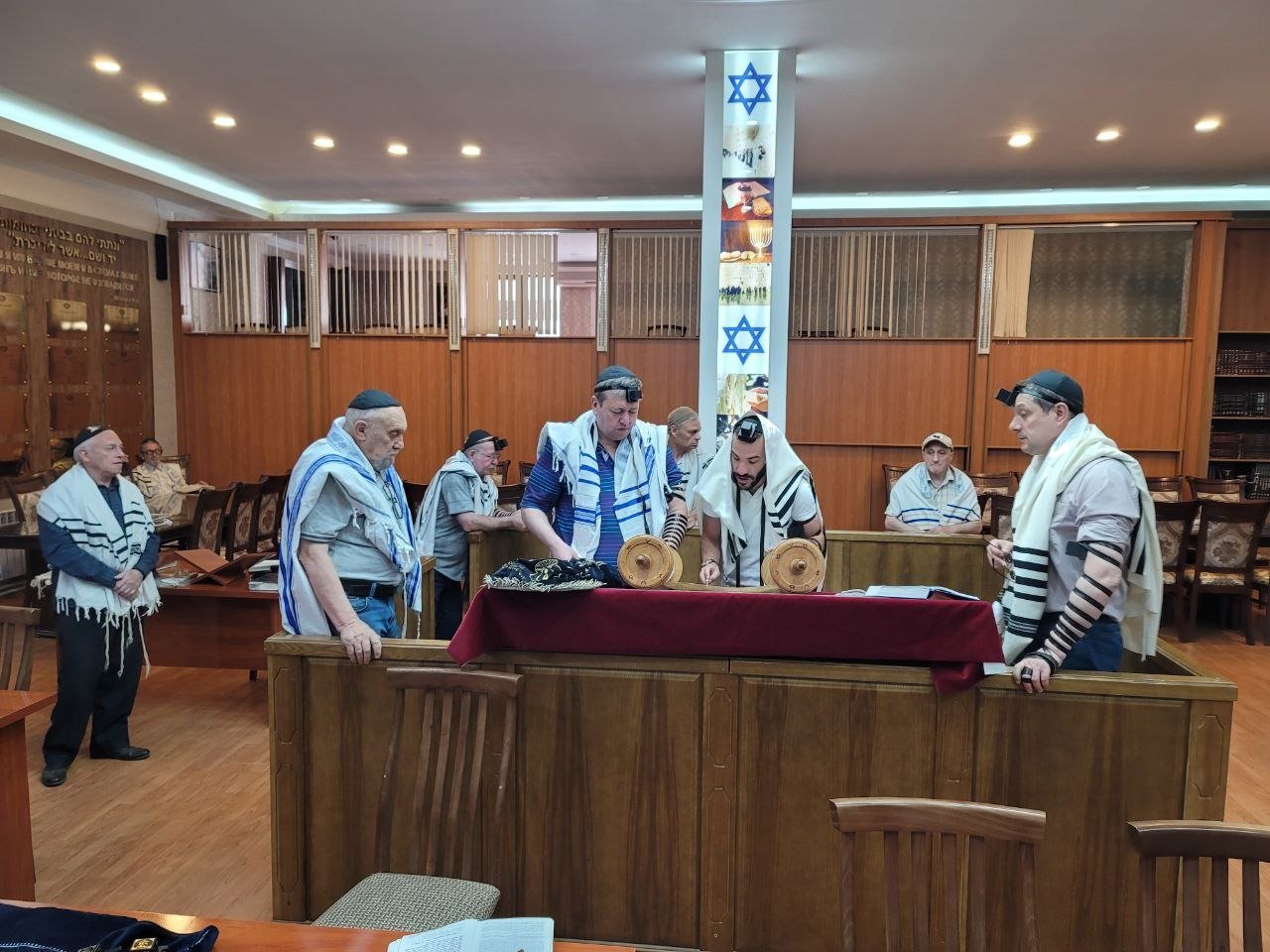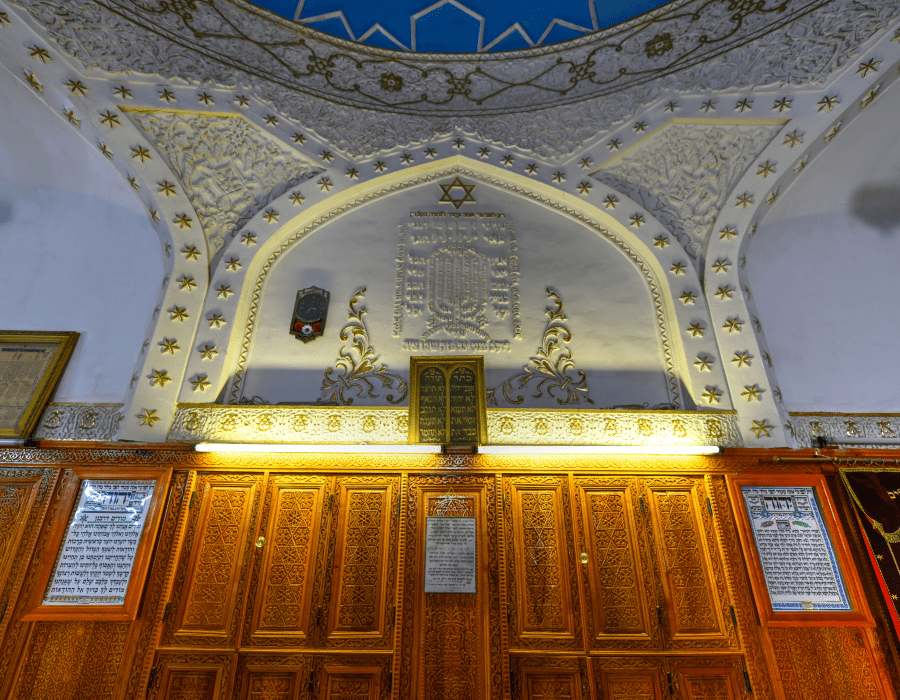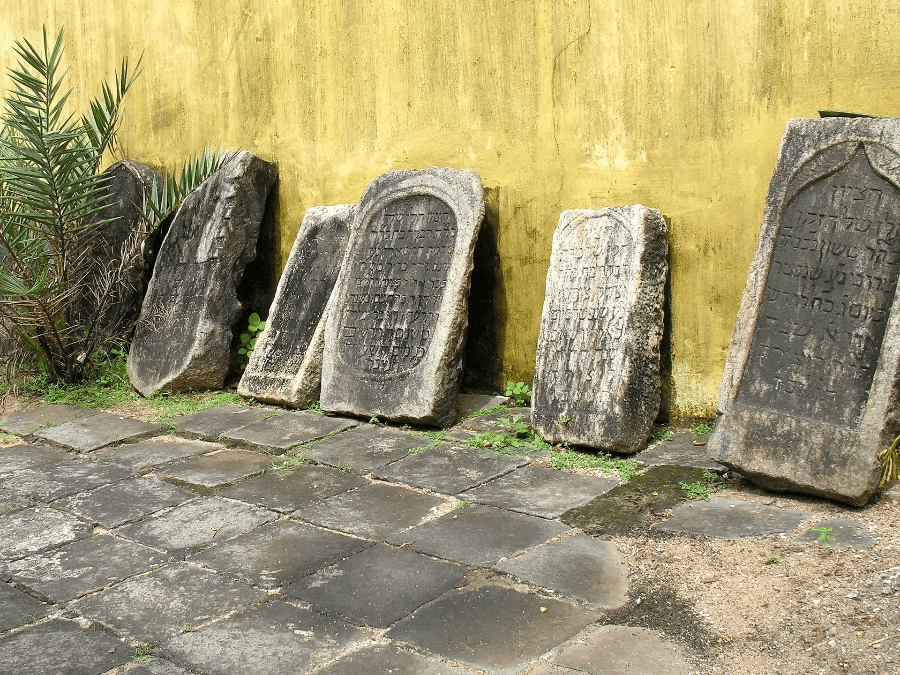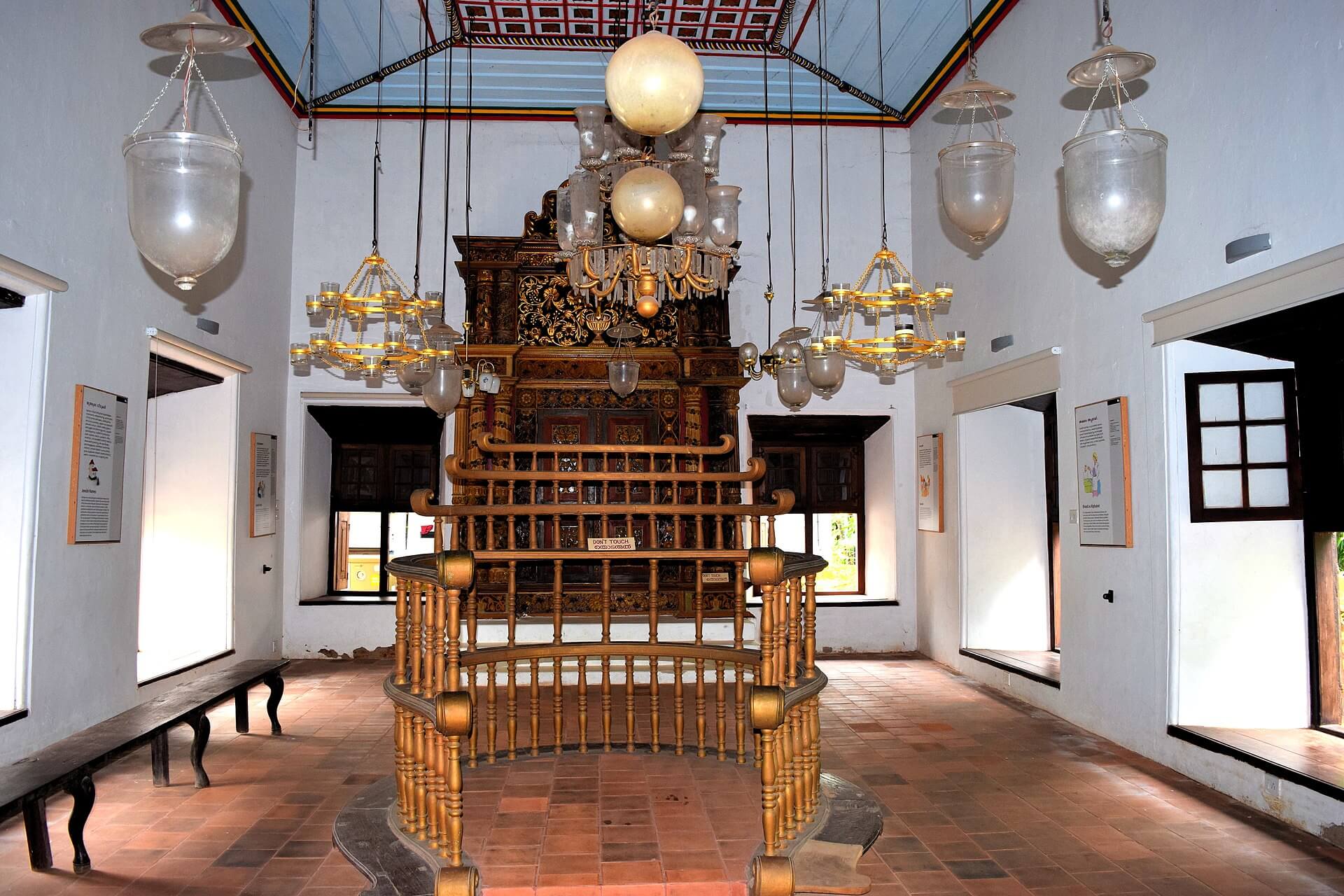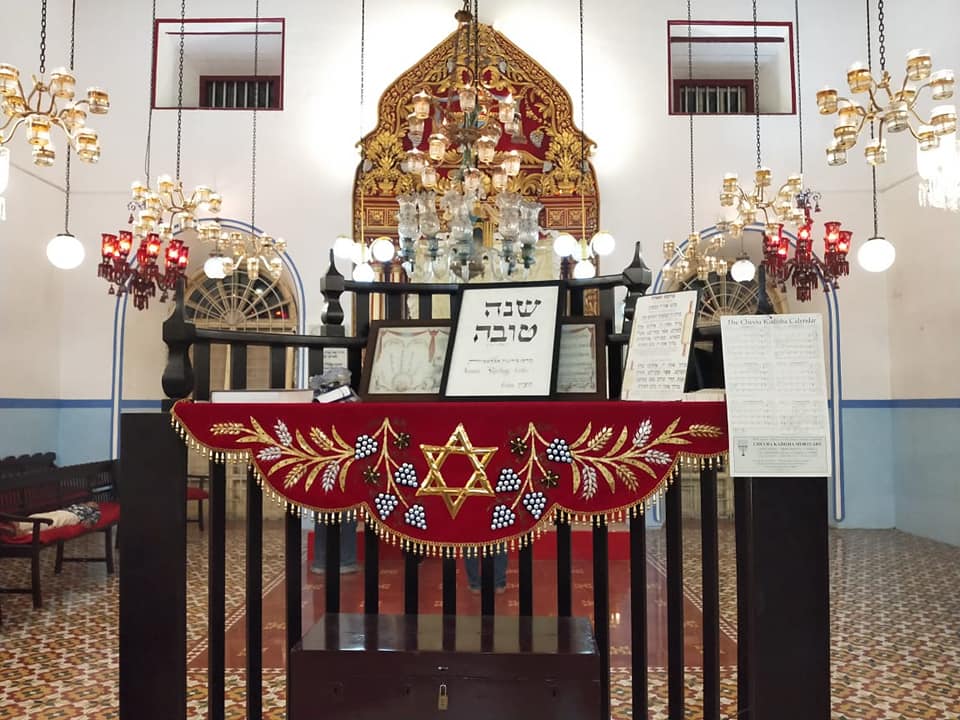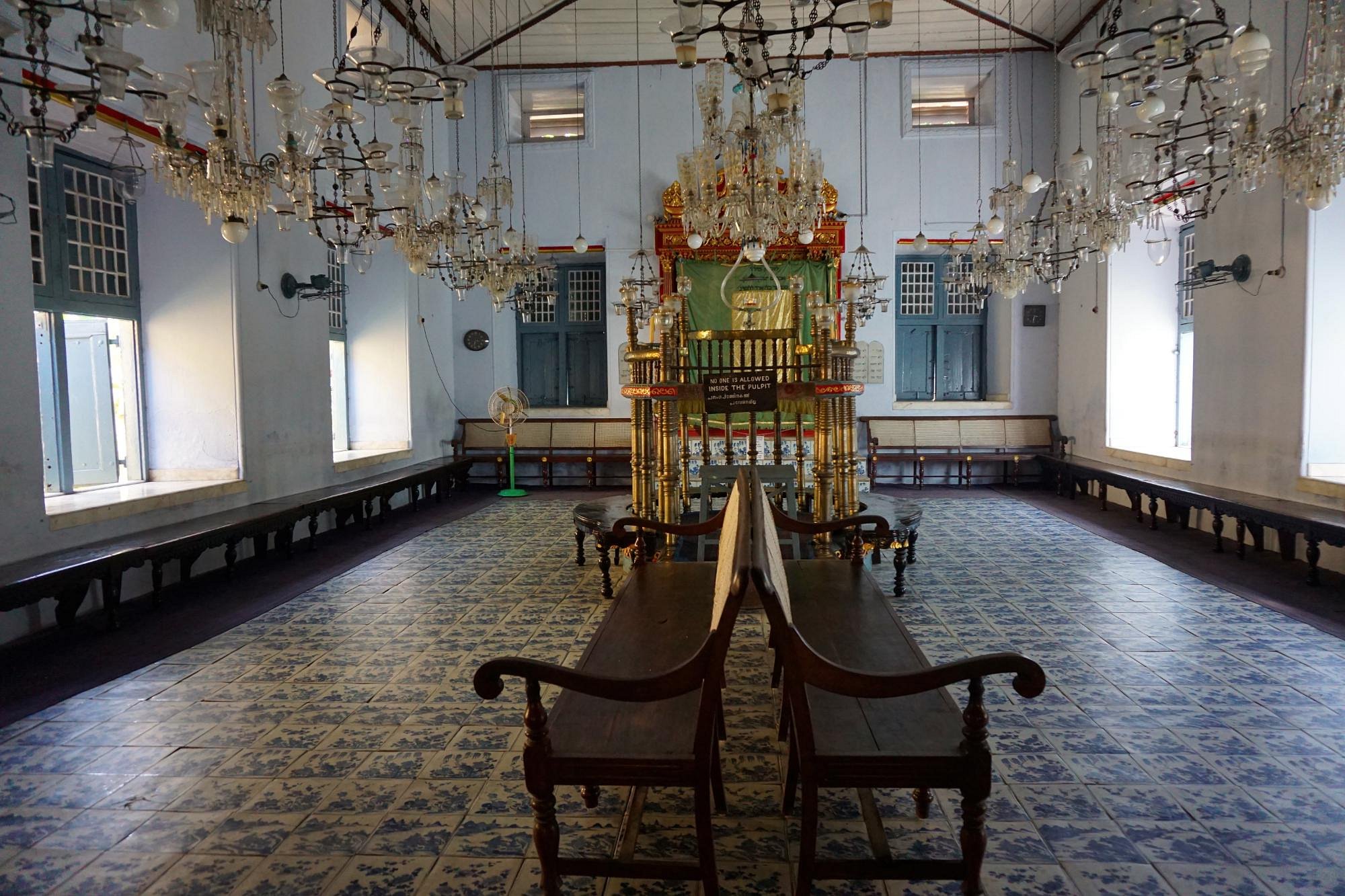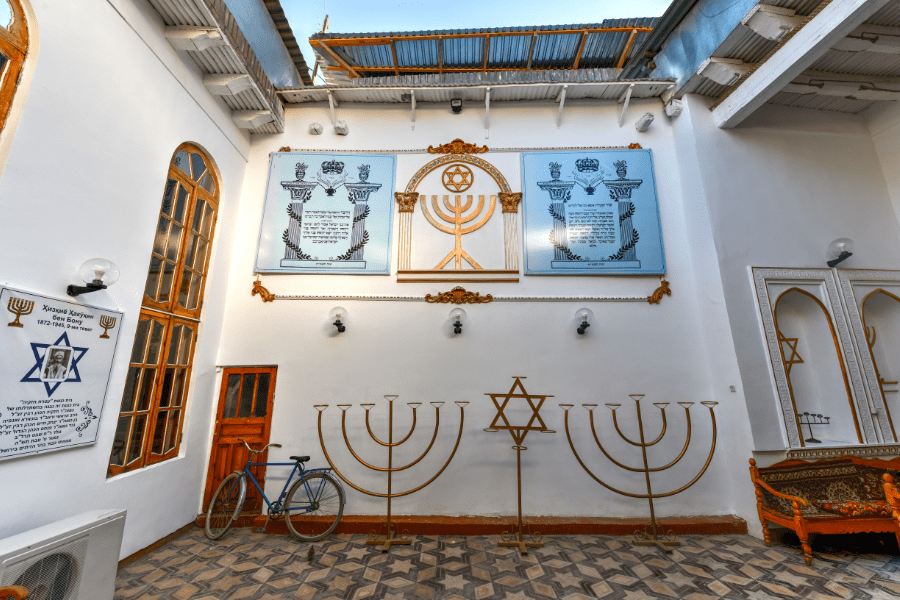Knesset Eliyahu is an Orthodox Jewish synagogue located in downtown Mumbai, India. It is the city’s second oldest Sephardic synagogue. It was established in 1884 by Jacob Elias Sassoon, son of Eliyahoo David Sassoon and grandson of David Sassoon; the latter had immigrated from Baghdad to India in 1832 due to persecution and had settled in Mumbai, then known as Bombay.
It is maintained by the Jacob Sassoon Trust. The building’s significance is attributed to its Jewish traditions as well as Indian and English colonial influences. It was designed by the British architectural firm Gostling & Morris of Bombay. The basement part of the edifice is built in stone masonry and the superstructure is built in brick masonry. The exterior facade of the synagogue is painted turquoise. The sanctuary within the interior of the building is in western direction, towards Jerusalem.
Photo Attribution: World Monuments Fund
